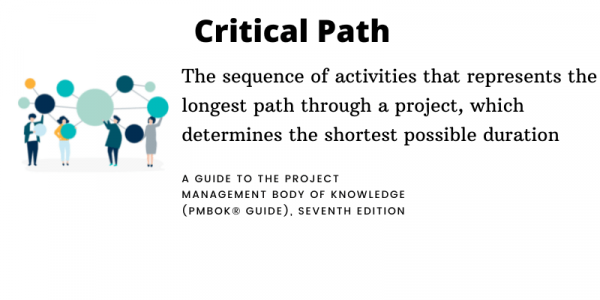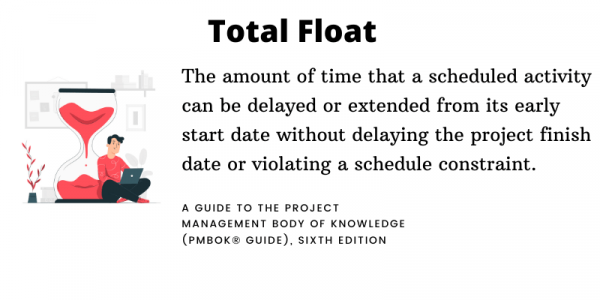Float in project management is the amount of time that a task can be delayed without delaying the entire project. In other words, it’s the amount of leeway that you have in your schedule. This can be calculated by using the formula: LF – EF = total float.
In project management, the measure of the amount of time that a task can be delayed without impacting the project’s overall completion date is known as Float.
Before calculating Float it is important to find the critical path.
Critical Path
The critical path is the longest and the most essential sequence of tasks that must be completed in order for the project to be finished on time.
When you’re managing a project, it’s important to be able to identify your critical path.
The critical path is the sequence of tasks that must be completed in order for the project to be completed on time. All other tasks are considered non-critical.
To identify your critical path, you need to:
- Create a task list of the specific activities your project will take to its completion.
- Once you have your list, you need to identify dependencies. A dependency is a task that must be completed before another task can begin.
For example, if you’re painting a room, you need to finish priming the walls before you can start painting. - After you have identified all of the dependencies, you can create a critical path diagram. This will show you the route of which tasks are critical and which are not.
- Then you need to evaluate the estimated time of every task to be completed. Here is when you can see how long it will take each task to get done.
- Finally, ask yourself what tasks are necessary enough to complete the entire project. Once the tasks are chosen, rearrange them by priority from start to finish, and Voila! There is your Critical Path.
Once you know the critical path, you can then calculate the float for each task by subtracting the task’s duration from the critical path’s length

Free Float vs Total Float In Project Management
In project management, the terms “free float” and “total float” are often used interchangeably. However, these two terms actually have different meanings and purpose.
| Free Float | Total Float |
|---|---|
| Free Float is the amount of time that a task can be delayed without delaying the subsequent task. | Total Float is the amount of time a task can be delayed without affecting the project’s finish date. |
| It is often used to calculate the critical path | While Total Float is used to calculate the project’s float. |
| The formula is expressed by: ES – EF = Free Float ES: Earliest Start date EF: Earliest Finish date | The formula is expressed by: LF – EF = Total Float EF = Earliest Finish Date LF = Latest Finish Date |

What is float in Construction Scheduling
In construction, the term “float” refers to the amount of time that a task can be delayed without impacting the overall project schedule. float is often used to schedule tasks that are not time-sensitive, such as administrative tasks or tasks that have a low priority. By factoring in float, construction managers can ensure that the project stays on track even if some tasks are delayed.
If your float is too low, it can cause delays in the project. If your float is too high, it can cause the project to finish early. Finding the right balance of floats is an important part of construction management.

Importance of using Float
Float scheduling is a project management technique that takes into account the fact that not all tasks can be started immediately and that some tasks will take longer to complete than others.
This technique is used in order to create a more realistic schedule for a project, as it allows for a certain amount of flexibility.
Float is considered to be a valuable project management tool because it can help you to identify which tasks can be delayed without affecting the project’s overall schedule.
It can also help you to spot potential bottlenecks in your project and to plan for contingencies. There’s no need to mention that it can also be used to measure the impact of changes and scope creep.
Benefits of Float
Project managers believe that calculating float is a vital part of project management because it allows you to see which tasks are critical and which ones can be delayed if necessary. This is very important because it allows for flexibility in the project when things don’t go exactly as planned.
How to calculate Float?
Calculating floats can be relatively simple you need to identify all of the tasks in your project and then determine the earliest (EF) and latest (LF) that each task can begin and end without affecting the project’s completion date. Follow these steps to find float.
Identify your critical Path
You need to identify your critical Path, by understanding which activities are most important, you can ensure that the project stays on track and is completed on time. Identify which activities are most important and need to be given priority. This is defined as the sequence of dependent tasks that take the longest path in the project from start to finish. Once done, it is important to find the dependencies by using a network diagram.
Define your earliest finish date
Define your earliest finish date also known as EF. It is important to know the EF before starting the project, as it can help you to save money and resources. If you start the project without knowing the EF, you may end up spending more money and time than necessary. Basically, determine the total duration of the task so the next one can start.
Perform a forwards pass

A forward pass starts at the beginning of the project and moves through the activities in the order in which they are sequenced in the network diagram. The early start and finish dates for each activity are determined by the activity’s predecessors. The late start and finish dates for each activity are determined by the activity’s successors.
This can be done by the formula EF = ES + Duration – 1
Perform a backward pass

When you finish the forward pass and determine the early and late start and finish dates along with the float for each activity, you are ready to do a backward pass. This is simply working backward from the end of the project to the beginning, plugging in the late finish dates to calculate the late start dates. The backward pass is calculated from right to left and is done using the following steps:
Determine the critical path. This is the path of activities that have zero floats.
Work backward through the network, plugging in the late finish dates for each activity.
This can be done by the formula LS = LF – Duration + 1
Calculate Float

The difference between the latest and earliest start dates is the task’s float
The formula is LF – EF = total float
What is Float or Slack in project management?
Although there are many different methods of project management, two of the most popular are float and slack. But what are the differences between these two methods?
- Float, also known as free float, is the amount of time that a task can be delayed without affecting the start or finish of another task.
- Slack, on the other hand, is the amount of time that a task can be delayed without affecting the overall project timeline.
Both float and slack are important in project management, but they serve different purposes.
- Float is used to schedule individual tasks, while slack is used to manage the overall project schedule.
Tips and Best Practices
There are a few things to keep in mind when finding float:
- Make sure to allow enough time for each task. If a task is expected to take longer than it actually does, it will create a backlog and cause delays.
- Don’t include too much detail. A float schedule should be a high-level overview of the project, not a detailed task list.
- Communicate with your team about the use of scheduling Float. Just make sure to track and monitor its use.
- Be realistic. It’s important to be realistic about the amount of time each task will take. If a task is estimated to take longer than it actually does
- Use scheduling float sparingly and only when absolutely necessary
FAQs
What is Schedule Float?
Float scheduling is the process of creating a detailed schedule that includes both the start and end dates of each task, as well as the amount of time each task is expected to take.
What is the main difference between Float and Slack?
Float is the amount of time that a task can be delayed without impacting the project’s overall completion date. Slack is the amount of time that a task can be delayed without impacting any subsequent tasks.
How do you calculate free Float?
The formula to free float is Early Start (ES) – Early Finish (EF) = Free Float.
What is a Critical Path?
The critical path is the essential sequence of activities required to complete a project. It includes all activities that must be completed on time in order for the project to be considered successful.
